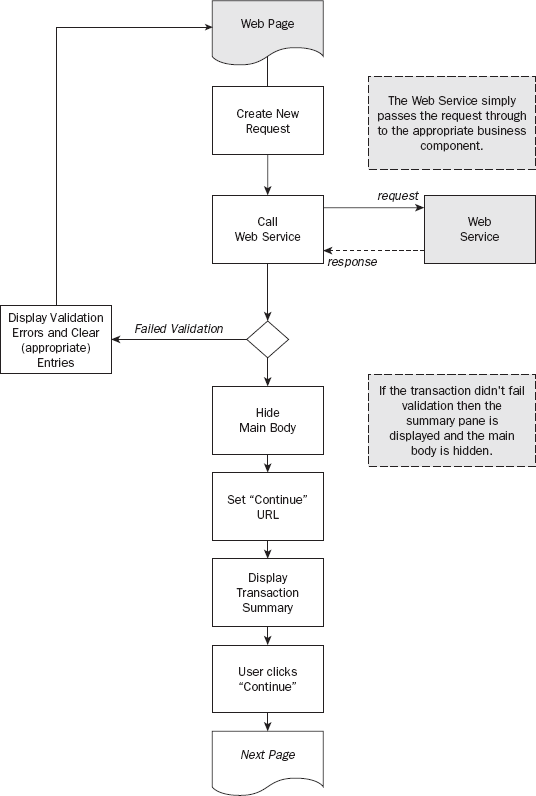14.2. The Presentation Tier
The web pages are responsible for capturing the user's input and calling a web service to initiate the business processing chain. Let's look first at the conceptual web page layout, the starting point for all user journeys through the user interface.
Figure 14-7 shows the conceptual layout of the Create New Account page, with various annotations.
Figure 14.7. Figure 14-7

The page is split into three individual panes: Page Header, Transaction Summary, and Main Body. The main reason for this approach is that it is going to be easier to control the flow and avoids redirecting the browser to a separate message page. You can use common controls to avoid each page duplicating the Page Header and Transaction Summary panes. Furthermore, you can also use base classes, which every web page would inherit from. These base classes would encapsulate common functionality, which is also in keeping with the modular approach, and they would reside in the web framework layer. At this point, let's simply earmark a single PageBase class.
Figure 14-8 shows the web page's call down to the web services and the conceptual processing pattern. All the web pages in the solution will follow a similar pattern.
Figure 14.8. Figure 14-8

Again, these simple steps provide some useful ...
Get Design – Build – Run: Applied Practices and Principles for Production-Ready Software Development now with the O’Reilly learning platform.
O’Reilly members experience books, live events, courses curated by job role, and more from O’Reilly and nearly 200 top publishers.

